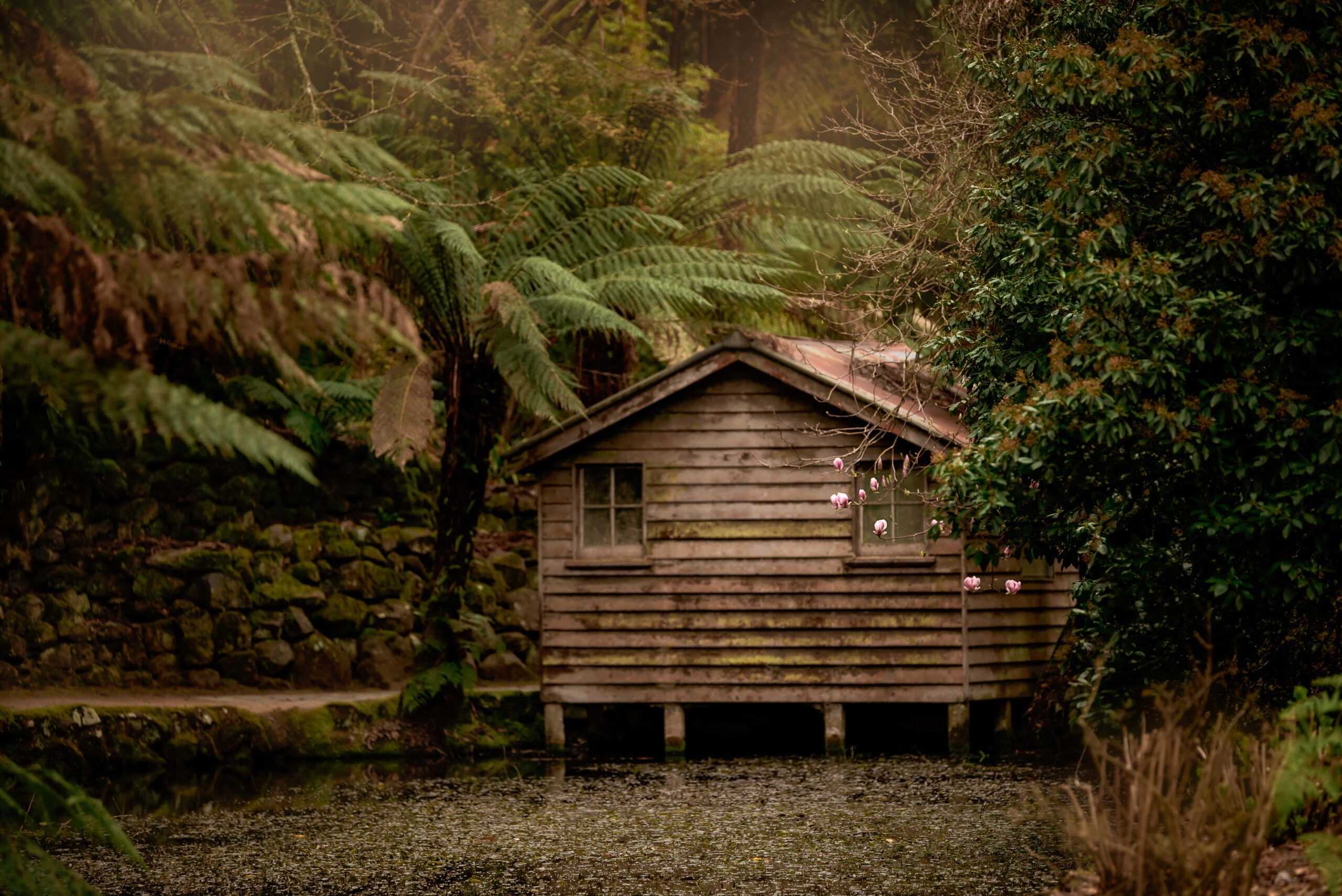
ALFRED NICHOLAS GARDENS: THE DANDENONGS’ BEST KNOWN PUBLIC GARDEN
1A Sherbrooke Road, Sherbrooke
Alfred Nicholas Gardens is perhaps one of the most photographed spots in the hills, with its iconic lakeside boathouse drawing hoards of visitors, particularly in Autumn. During the lockdowns of 2020 and 2021 this garden became quite literally a playground for my children. My daughter Piper refers to it under the moniker “lookout lake”. This name came about after she discovered a small stone set of steps that runs up the left hand side of the upper portion of the waterfall which runs into the lake below. Despite frequently visiting Alfred Nicholas over the years I still find new pockets and tiny details I have never noticed on previous excursions.
HISTORY OF ALFRED NICHOLAS GARDENS
Alfred Nicholas Gardens is probably the best known of several previously, privately-owned gardens in the Dandenongs which are now managed by Parks Victoria. Originally part of the larger Burnham Beeches Estate the gardens were developed by Alfred Nicholas. Nicholas was a pharmacist and the creator of Aspro. In 1929 he hired a team of 60 staff to clear the land. He set off to the Chelsea Flower Show in England and imported 150 trees. Works continued but sadly he passed away in 1933, as the gardens would have been beginning to become established. During the second world war the art deco home adjoining the grounds was used as a hospital and Alfred’s wife continued to live at the property until the 1950s. Beyond that it was used a a science research facility before being donated to the State of Victoria.
GETTING TO ALFRED NICHOLAS GARDENS
Entry to the gardens is free and there is parking across the road. For those coming by public transport catch bus number 694 from Belgrave Train Station and hope off at the stop at the corner of Sherbrooke Road and Nobles Lane. From there it is a 2 minute walk to the gardens.
Just inside the impressive front gates is a detailed map of the gardens. I highly recommend photographing the map on your phone before you head off down the slope, in case you need to refer to it to navigate your way back.
There are public toilets adjacent to the ornamental lake.


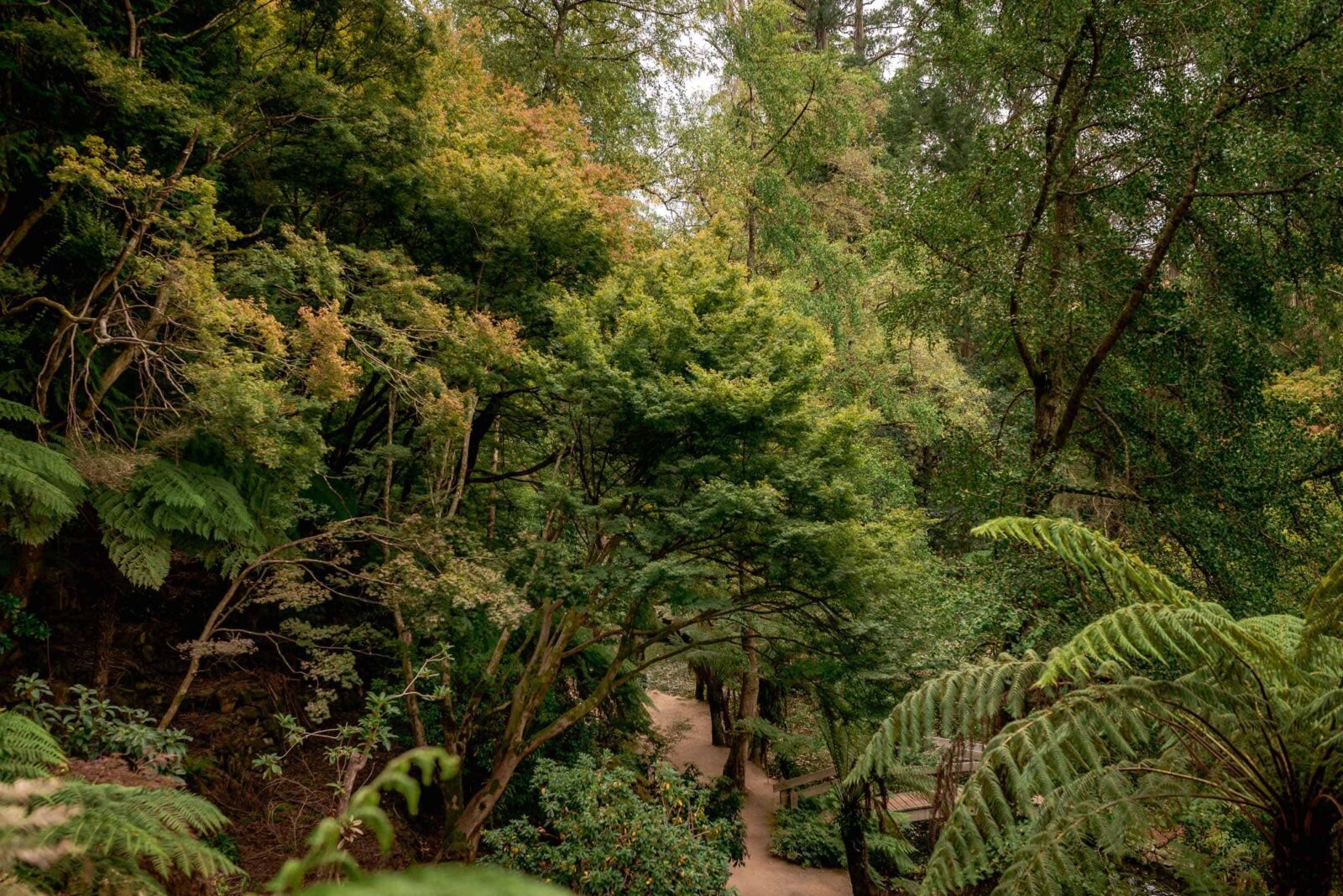
OVERVIEW OF ALFRED NICHOLAS GARDENS
When I visit I always think of the 13 acre gardens as being in four sections, each quite different from the others. The first section is the flat area comprising the driveway and upper ponds that lead towards the art deco home. The second section is the sloping paths and steps that are dotted with hydrangeas and winter roses. The third section – and most famous – is the area around the ornamental lake, boathouse and waterfall. And the fourth and final section is the sloping arboretum, which few actually go down to visit.
MANMADE STRUCTURES AT ALFRED NICHOLAS GARDENS
In many ways what makes Alfred Nicholas Gardens so popular are not the gardens per se but the manmade structures throughout them. These include the small ponds and little bridges on the approach to the main house and the rotunda which is located halfway down the property. The stone retaining walls which line the paths and steps and are now moss covered and are a pretty feature. The main manmade structures are the ornamental lake, pedestrian bridges, boathouse and waterfall with central pond.
KIDS FAVOURITES
My 6 year old daughter Piper and her brother Oakley (who is like a little mountain goat) love to visit Alfred Nicholas Gardens and always run up to the top of the waterfall and call to us below. Their next favourite playspot is over behind the famous boathouse where there are two hollow trees. One is still standing and they like to hide inside it. The second is laying against the slope and they love to crawl straight through it like a tunnel. Their third favourite spot is one we only just recently took to exploring; the lowest part of the gardens (the signed Arboretum). They love running down the grassed hill at full speed or sometimes even rolling. They also love getting in below the conifers and using them as cubbies.
THE SEASONS
Each change of season brings variations to what Alfred Nicholas offers. In Autumn the deciduous trees are the obvious drawcard. Come Winter the hellebores and the fern glades take centre stage. As Spring enters the rhododendrons become the star and in early Summer the hydrangeas come into all their glory.
OTHER NEARBY GARDENS
If you enjoyed Alfred Nicholas Gardens be sure to continue down the road to also explore George Tindale Garden, which is a smaller, but extremely sweet publicly owned garden. Also in the vicinity, and accessible off Olinda-Monbulk Road is Pirianda Gardens along with the Dandenong Ranges Botanic Gardens (formerly known as the National Rhododendron Gardens).
SURROUNDING VILLAGES AND AMENITIES
From Alfred Nicholas the nearest townships with stores and amenities are Kallista to the east and Sassafras to the north-west. If you enjoyed visiting Alfred Nicholas be sure to check out the nearby nurseries where you can purchase many of the plants you would have seen. When you need coffee or a bite to eat Proserpina Bakehouse is only a few moments away on the main road in Ferny Creek. If you have energy left in the tank for more walking cross the road opposite the gardens and enter the Dandenong Ranges National Park.
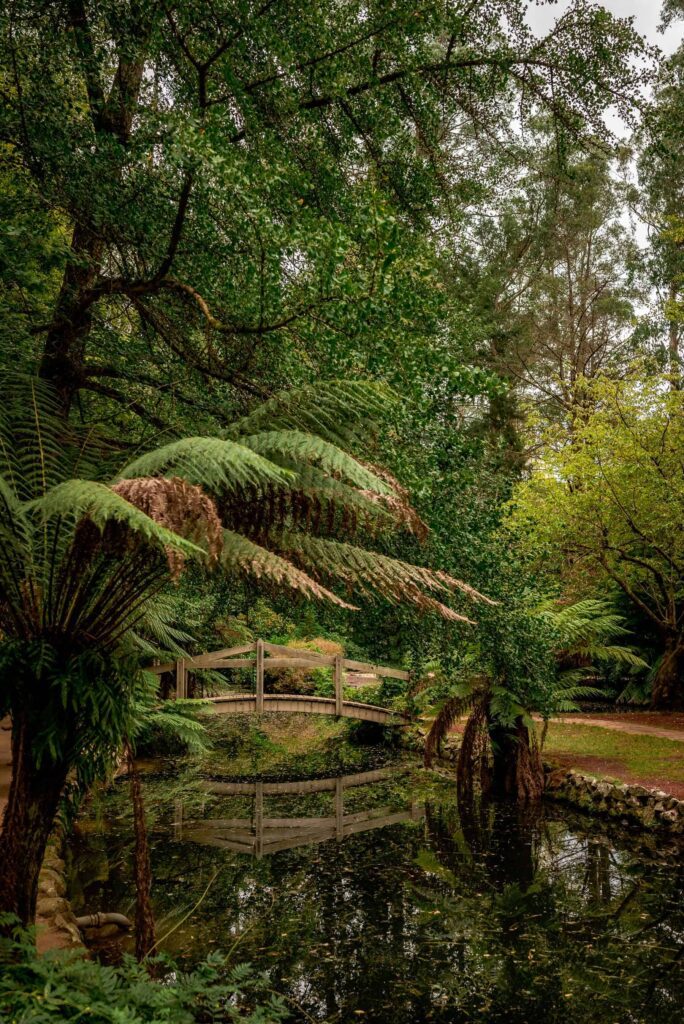
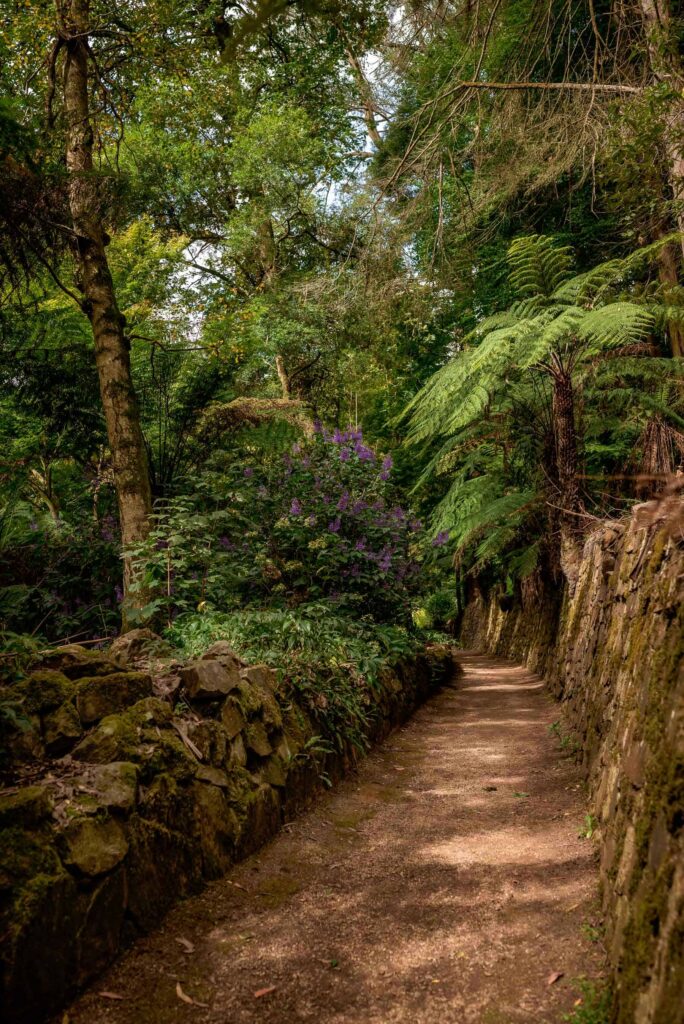
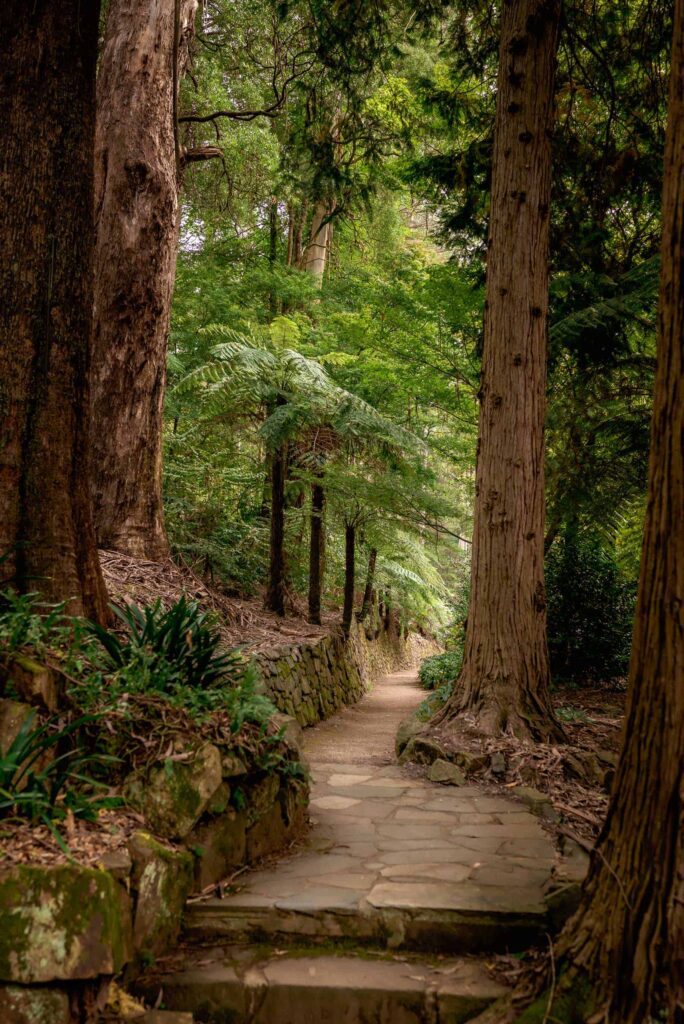
Address: 1A Sherbrooke Road, Sherbrooke
Public toilets: Yes
Terrain: Extremely steep
Dogs allowed: Yes
Nearest playground: Olinda Playspace
Nearest cafe/bakery: Proserpina Bakehouse






































This is really interesting, You are a very skilled blogger.
I’ve joined your feed and look forward to seeking more of
your great post. Also, I’ve shared your site in my social networks!
Wow, awesome blog format! How long have you been blogging for?
you made blogging glance easy. The entire look of your web site is excellent,
as smartly as the content! You can see similar:
sklep internetowy and here sklep